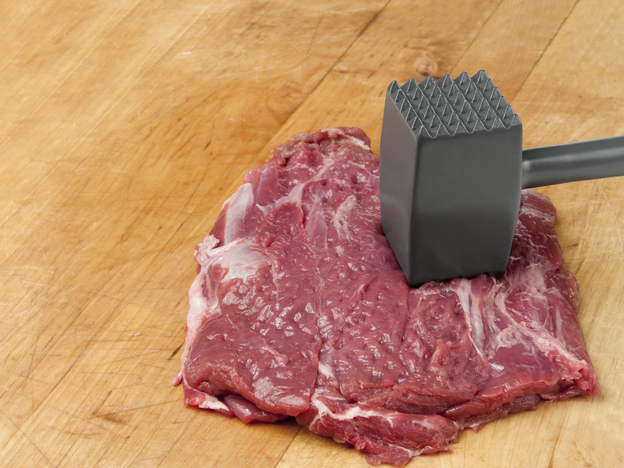
Photo: iStockphoto
Post by Allison Aubrey, The Salt at NPR Food (6/11/13)
In order to make tough cuts of beef more tender, the industry uses a mechanical tenderizing process that involves piercing the meat with needles.
This is effective in breaking up the tough muscle fibers, but there's a downside, too: a higher risk of surface bacteria making their way into the cut of meat, which can set the stage for food poisoning. That's a particular concern when it comes to the center of meat cuts, which don't get heated to the same temperatures as the exterior.
Since 2003, the Centers for Disease Control and Prevention has learned about five foodborne illness outbreaks linked to mechanically tenderized beef.
And what was the common denominator in these outbreaks? Undercooked or raw beef.